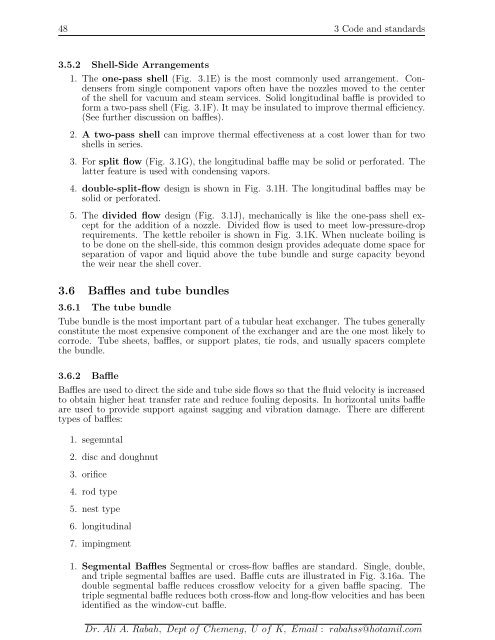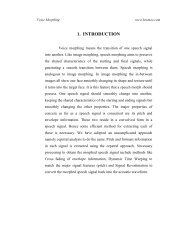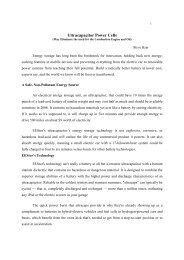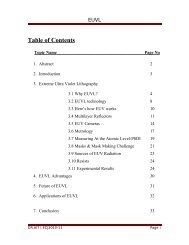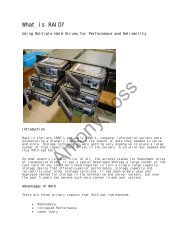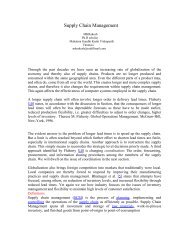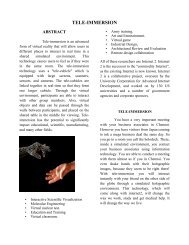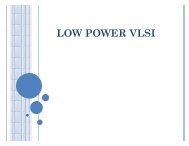Heat Exchangers: Design, Operation ... - 123SeminarsOnly
Heat Exchangers: Design, Operation ... - 123SeminarsOnly
Heat Exchangers: Design, Operation ... - 123SeminarsOnly
Create successful ePaper yourself
Turn your PDF publications into a flip-book with our unique Google optimized e-Paper software.
48 3 Code and standards<br />
3.5.2 Shell-Side Arrangements<br />
1. The one-pass shell (Fig. 3.1E) is the most commonly used arrangement. Condensers<br />
from single component vapors often have the nozzles moved to the center<br />
of the shell for vacuum and steam services. Solid longitudinal baffle is provided to<br />
form a two-pass shell (Fig. 3.1F). It may be insulated to improve thermal efficiency.<br />
(See further discussion on baffles).<br />
2. A two-pass shell can improve thermal effectiveness at a cost lower than for two<br />
shells in series.<br />
3. For split flow (Fig. 3.1G), the longitudinal baffle may be solid or perforated. The<br />
latter feature is used with condensing vapors.<br />
4. double-split-flow design is shown in Fig. 3.1H. The longitudinal baffles may be<br />
solid or perforated.<br />
5. The divided flow design (Fig. 3.1J), mechanically is like the one-pass shell except<br />
for the addition of a nozzle. Divided flow is used to meet low-pressure-drop<br />
requirements. The kettle reboiler is shown in Fig. 3.1K. When nucleate boiling is<br />
to be done on the shell-side, this common design provides adequate dome space for<br />
separation of vapor and liquid above the tube bundle and surge capacity beyond<br />
the weir near the shell cover.<br />
3.6 Baffles and tube bundles<br />
3.6.1 The tube bundle<br />
Tube bundle is the most important part of a tubular heat exchanger. The tubes generally<br />
constitute the most expensive component of the exchanger and are the one most likely to<br />
corrode. Tube sheets, baffles, or support plates, tie rods, and usually spacers complete<br />
the bundle.<br />
3.6.2 Baffle<br />
Baffles are used to direct the side and tube side flows so that the fluid velocity is increased<br />
to obtain higher heat transfer rate and reduce fouling deposits. In horizontal units baffle<br />
are used to provide support against sagging and vibration damage. There are different<br />
types of baffles:<br />
1. segemntal<br />
2. disc and doughnut<br />
3. orifice<br />
4. rod type<br />
5. nest type<br />
6. longitudinal<br />
7. impingment<br />
1. Segmental Baffles Segmental or cross-flow baffles are standard. Single, double,<br />
and triple segmental baffles are used. Baffle cuts are illustrated in Fig. 3.16a. The<br />
double segmental baffle reduces crossflow velocity for a given baffle spacing. The<br />
triple segmental baffle reduces both cross-flow and long-flow velocities and has been<br />
identified as the window-cut baffle.<br />
Dr. Ali A. Rabah, Dept of Chemeng, U of K, Email : rabahss@hotamil.com


